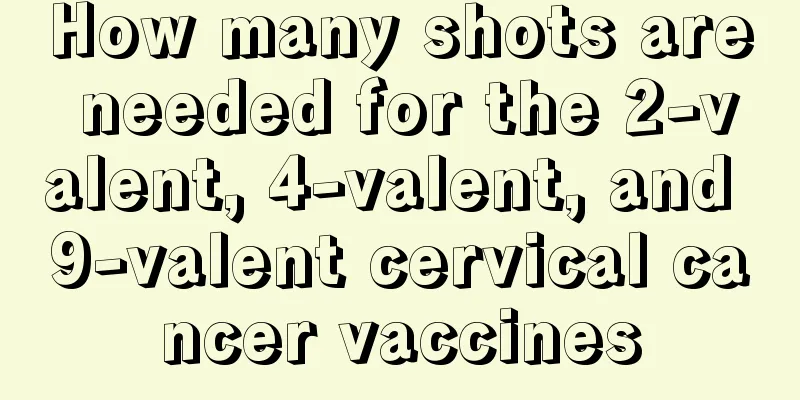How many shots are needed for the 2-valent, 4-valent, and 9-valent cervical cancer vaccines

|
Whether it is bivalent, quadrivalent or nonavalent, the cervical cancer vaccine requires three injections to effectively prevent cervical cancer. 1. Vaccine types and vaccination procedures The main difference between the bivalent, quadrivalent and nine-valent vaccines is the types of viruses they protect against. The bivalent vaccine targets HPV types 16 and 18, the quadrivalent vaccine adds types 6 and 11, and the nine-valent vaccine covers more types. No matter which one you choose, the vaccination process is three shots. After the first shot, you need to wait two months before getting the second shot, and the last shot is given six months later. 2. Antibody production and mechanism of action After the first shot, the body begins to produce antibodies, but the amount is limited and the duration is short. The second shot significantly increases the level of antibodies, allowing them to stay in the body longer. The third shot further increases the amount and durability of antibodies, ensuring long-term protection. 3. Applicable populations of different valent vaccines The bivalent vaccine is suitable for women aged 9 to 45 and mainly targets high-risk viruses for cervical cancer. The quadrivalent and nine-valent vaccines are suitable for people aged 9 to 26, with the latter providing broader protection. Which vaccine to choose can be determined based on age, budget and personal health status. 4. The best time to get vaccinated The best time to get vaccinated is before your first sexual intercourse, so you can get protection before you are exposed to the virus. Even if you have already started having sex, vaccination is still beneficial and can reduce the risk of infection. 5. Precautions after vaccination You may experience mild side effects after vaccination, such as pain at the injection site, dizziness, or fever. These are usually temporary and not a cause for concern. Maintaining a healthy lifestyle and avoiding unnecessary risk of infection are good ways to increase the effectiveness of the vaccine. 6. Importance of vaccination Cervical cancer is one of the diseases that can be prevented by vaccines. Vaccination not only protects yourself, but also indirectly protects others, especially when herd immunity has not yet been fully achieved. 7. Personal experience and suggestions Many people feel relieved after getting vaccinated because it is an effective preventive measure. Choosing the right vaccine for you and completing the full course of vaccination on time will provide you with the best protection. Communicating with your doctor and learning more about vaccines will help you make a more informed choice. Getting the cervical cancer vaccine is an important step in protecting women's health. Through the scientific vaccination process and the right choice, everyone can lay a solid foundation for their healthy future. |
<<: Several signs of cervical cancer
>>: How to rule out laryngeal cancer yourself
Recommend
What is the cause of urinary stones
The occurrence of any disease may be related to b...
5 things to note when nursing closed chest drainage after lung cancer surgery
After lung resection, a drainage tube is often pl...
Eating cooked garlic will make you fart
Many people often pass gas because of eating cert...
My stomach hurts after eating bayberry
Bayberry is a sour and sweet food, rich in vitami...
What kind of head shape is suitable for a fat face
There are many hairstyles suitable for chubby fac...
What virus is chickenpox
Chickenpox is a viral disease. This disease is us...
What to do if your eyes become bloodshot when you stand upside down
Some people see acrobats often performing handsta...
What are the main causes of gastric cancer?
Gastric cancer is a common malignant tumor in Chi...
Symptoms of measles, mumps and flu
MMR is a disease that is closely related to peopl...
Can the bitter taste in the mouth after radiotherapy for nasopharyngeal carcinoma heal on its own?
Can the bitter taste in the mouth caused by radio...
Why do I keep feeling sleepy after resection of gastric stump cancer?
Gastric remnant cancer refers to patients who hav...
How to make soup with deer trotter tendons?
Deer foot tendon is a common food in daily life. ...
How to quickly lower alanine aminotransferase
Excessively high alanine aminotransferase levels ...
Was there any harm in working night shifts last month?
Night is the time for people's bodies and var...
Can enema be used frequently?
Suppositories are a common medicine. When severe ...









